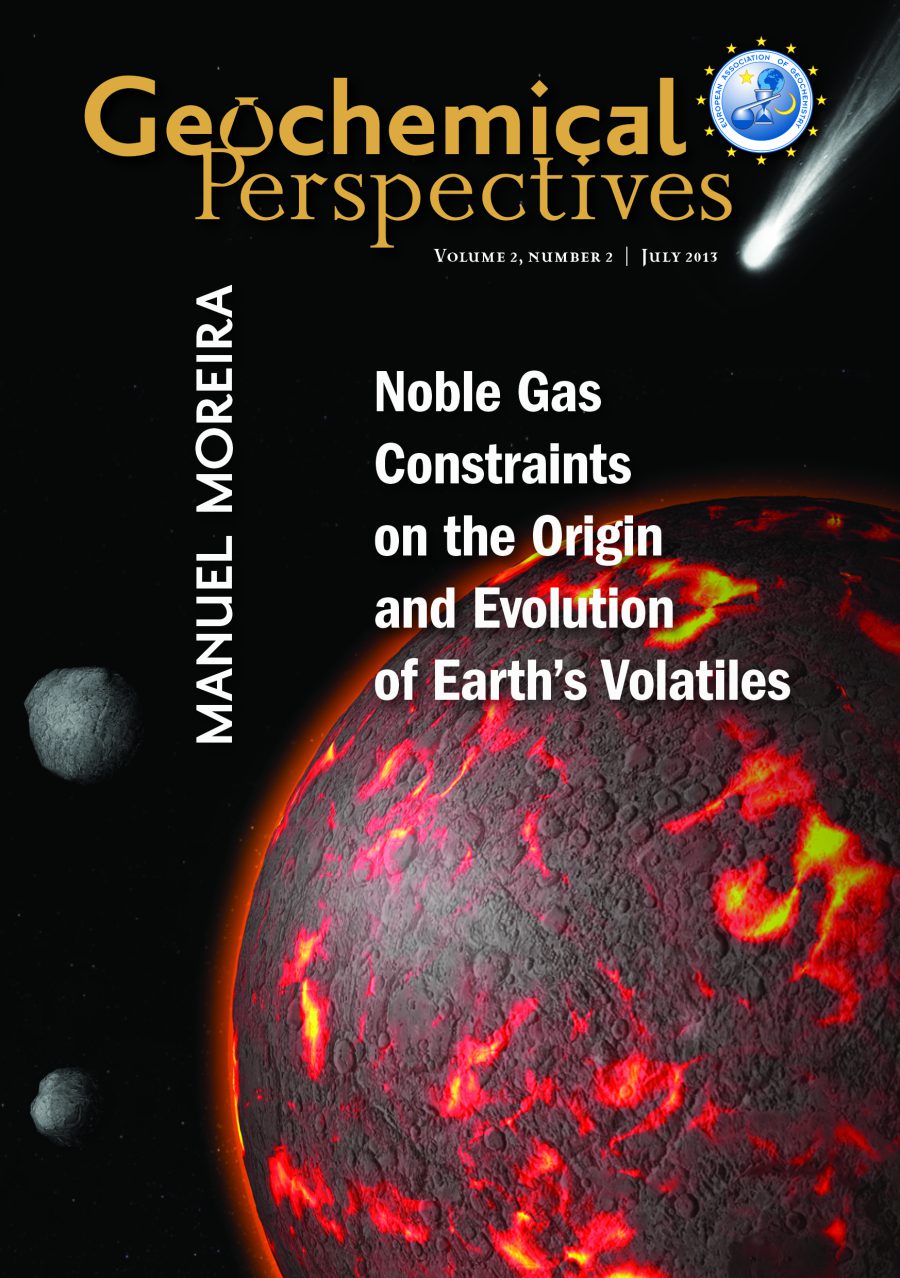
Noble Gas Constraints on the Origin and Evolution of Earth’s Volatiles
by Manuel Moreira1doi: 10.7185/geochempersp.2.2 | Volume 2, Number 2 (pages 229-403)
Abstract
This issue of Geochemical Perspectives examines the noble gas geochemistry of meteorites and the Earth to provide essential constraints on the origin of volatiles on our own and other terrestrial planets. Noble gases (He, Ne, Ar, Kr, Xe and Rn) belong to the last column of the Mendeleev’s table, implying they are chemically inert in contrast to the other highly volatile elements. This important feature allows their primordial elemental and isotopic compositions on Earth to be determined without having to consider the additional complexities of chemical or biological influences. Any variations of elemental or isotopic ratios of the noble gases reflects either physical processes such as diffusion, adsorption, degassing, or solubilisation or the effects of natural radioactivity. Moreover, among the highly volatile elements, the noble gases are the only ones that are able to provide constraints on the timing of geochemical fractionations that have occurred since Earth’s accretion, thanks to the natural radioactivity of several parent nuclides with a range of different half-lives, 235,238U, 232Th, 40K, 244Pu, 129I.
In this issue, I describe the distribution and isotopic compositions of noble gases in meteorites, mantle-derived rocks and the atmosphere, from both a historical point of view and using some major, new discoveries in that field that have recently changed opinions on mantle/atmosphere evolution and on the origin of volatiles on terrestrial planets. In particular I discuss the nature of the parent bodies and of the noble gas carriers, the existence and location of a reservoir rich in primordial noble gases sampled by mantle plumes, the subduction of atmospheric noble gas into the mantle and the evolution of the atmosphere evolution since the Earth’s accretion. Of course, this contribution does not have the ambition addressing all the issues of noble gas geochemistry, but it raises some key questions and contemplates the potential future direction of research into the origin of noble gases and other volatiles in terrestrial planets in the coming years.

